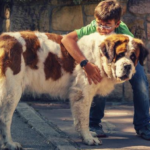Will Salivary Mucocele In Dogs Go Away
Salivary Mucocele in Dogs: A Comprehensive Guide
As a loving pet owner, one of the most distressing things to witness is when your furry friend is unwell. And if you’ve noticed swelling on your dog’s neck or jaw, chances are that you’re worried about whether it’s something serious. One possible cause of this condition is salivary mucocele, which can be worrying for any pet owner. In this article, we’ll delve into everything you need to know about salivary mucocele in dogs, including its causes, symptoms, and treatments.
What exactly is Salivary Mucocele?
Salivary mucocele, also known as sialocele or ranula in humans, is a condition where there’s a buildup of saliva in the tissues surrounding the salivary gland. Essentially, it’s like a cyst filled with saliva. This can occur due to trauma to the salivary gland or duct, bacterial infections, or tumors.
Symptoms of Salivary Mucocele
The most obvious symptom of salivary mucocele in dogs is swelling around the lower jaw or neck area. The size of the swelling depends on the severity of the condition. Some dogs may have a small bump while others may have large lumps that can interfere with their ability to eat or drink.
Other signs that your dog may be suffering from salivary mucocele include difficulty swallowing food and water, drooling excessively, and gagging or coughing. Additionally, some dogs may show signs of discomfort when touching the affected area.
How is Salivary Mucocele Diagnosed?
If you suspect that your furry friend has a salivary mucocele, it s important to take them to see a veterinarian as soon as possible. They will perform a physical examination and may recommend further tests such as blood work and imaging studies (X-rays, CT scans, or MRIs) to determine the severity of the condition.
Treatment Options for Salivary Mucocele
The treatment for salivary mucocele depends on the severity of the condition. In mild cases where the swelling is small and not causing any discomfort to your dog, your vet may only recommend monitoring the lump and waiting to see if it resolves on its own.
However, in more severe cases, surgery may be required to remove the cyst. Depending on the location of the mucocele, your vet may perform a procedure called a sialocele marsupialization, which involves draining and suturing the gland back together. Alternatively, they may need to remove part or all of the affected gland.
Post-Surgery Care
If your dog has undergone surgery for salivary mucocele removal, it’s important to follow your veterinarian’s instructions carefully. This will usually involve keeping your pet quiet and still during their recovery period, as well as administering any medication as prescribed.
It¡¯s also important to keep an eye on your dog¡¯s incision site and watch out for any signs of infection such as redness, swelling, discharge or fever. If you notice anything unusual, be sure to contact your vet immediately.
Preventi



